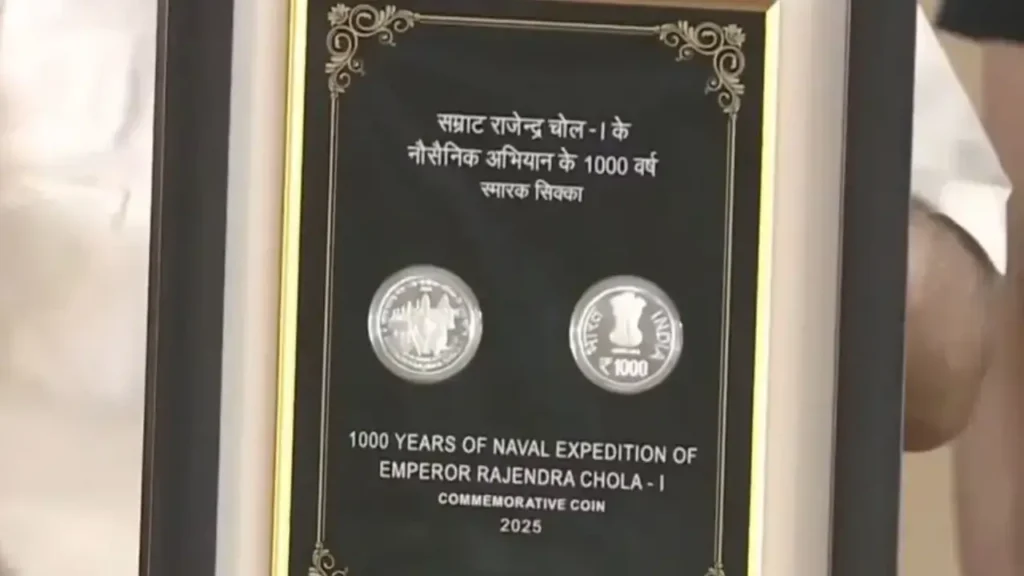Rajendra Chola I (ruled 1014-1044 CE) was one of the greatest rulers in Indian history and a monumental figure in South Asia’s medieval past. The son of Rajaraja Chola I, he not only expanded the Chola Empire to unprecedented geographical limits but also established a legacy of military innovation, cultural patronage, and administrative excellence. His reign marks the pinnacle of Chola imperialism, both on land and at sea.
Table of Contents
Early Life and Ascension
Rajendra was born into the illustrious Chola dynasty, which had already established itself as a dominant power in southern India. From a young age, he was trained in warfare and administration. He served as co-regent during his father Rajaraja Chola I’s rule and gained valuable experience in military campaigns and governance. Upon Rajaraja’s death in 1014 CE, Rajendra ascended the throne and continued his father’s ambitious expansionist policies.

Military Conquests in India
Rajendra Chola I’s most celebrated achievement was his northern military expedition that culminated in the conquest of territories up to the river Ganges. He led a successful campaign against the Pala dynasty in Bengal, capturing vast territories in eastern India. As a symbolic gesture of his triumph, he brought back holy Ganga water to the south and established a new capital city named Gangaikonda Cholapuram (“The city of the Chola who conquered the Ganges”).
Domestically, he subdued the Western Chalukyas and strengthened his hold over Tamil Nadu, Andhra Pradesh, and Karnataka. The conquest of Odisha and parts of central India further exemplified his military brilliance.
One of the most extraordinary features of Rajendra Chola’s reign was his unprecedented maritime campaign. Around 1025 CE, he launched a naval expedition against Southeast Asia, targeting the powerful Srivijaya Empire and other kingdoms in modern-day Indonesia, Malaysia, and Thailand. This campaign was not aimed at colonization but was likely intended to control maritime trade routes in the Bay of Bengal and the Strait of Malacca.
His fleet successfully subdued Srivijaya’s naval power, demonstrating the might of the Chola navy and earning Rajendra Chola international fame. These overseas conquests established Indian influence far beyond the subcontinent and played a role in the spread of Tamil culture and Hindu-Buddhist traditions in Southeast Asia.

Administrative Genius
Rajendra was not merely a conqueror; he was a wise and visionary administrator. He continued and refined the bureaucratic system established by his father. Inscriptions from his reign reveal a well-organized governance model with centralized authority and local autonomy.
He maintained a standing army and navy, encouraged land revenue reforms, and ensured temple-centered economic activity. The Chola bureaucracy under Rajendra was sophisticated, with village-level self-governance institutions (ur, sabha, and nagaram) playing a crucial role in administration and taxation.
Patron of Art and Architecture
Like his father, Rajendra Chola I was a great patron of arts and temple architecture. The most enduring symbol of his cultural patronage is the majestic Brihadisvara Temple at Gangaikonda Cholapuram. Built as a sister monument to the temple in Thanjavur, it stands today as a UNESCO World Heritage Site.
He commissioned inscriptions, sculptures, and bronze images, many of which exhibit refined craftsmanship. These works not only reflect religious devotion but also provide valuable historical records of society, economy, and politics during the Chola period.
Religious Policy
Rajendra Chola I was a devout Shaivite and continued royal patronage of Shiva temples. However, he was also tolerant of other religions. Buddhist institutions and Jain centers continued to flourish under his reign, particularly due to the Chola interest in maritime trade with Buddhist-majority regions of Southeast Asia.
Death and Succession
Rajendra Chola I ruled for about three decades and passed away in 1044 CE. He was succeeded by his son, Rajadhiraja Chola I, who continued the legacy of expansion and administration. Rajendra’s reign is remembered as the zenith of Chola imperial power.
Legacy
Rajendra Chola I is remembered as one of the greatest emperors in Indian history. His contributions to military strategy, naval prowess, urban planning, and temple architecture set benchmarks for future rulers. The global outreach of his empire reshaped trade, diplomacy, and cultural exchange across Asia.
Modern historians view him as a visionary ruler who transformed the Chola kingdom into a pan-Asian power. His legacy endures through inscriptions, architectural wonders, and the continuing cultural influence of the Cholas in parts of Southeast Asia.
Also read:
Rajaraja Chola I (985-1014)
Rajendra Chola I (1014-1044)
Rajadhiraja Chola I (1044-1054)
